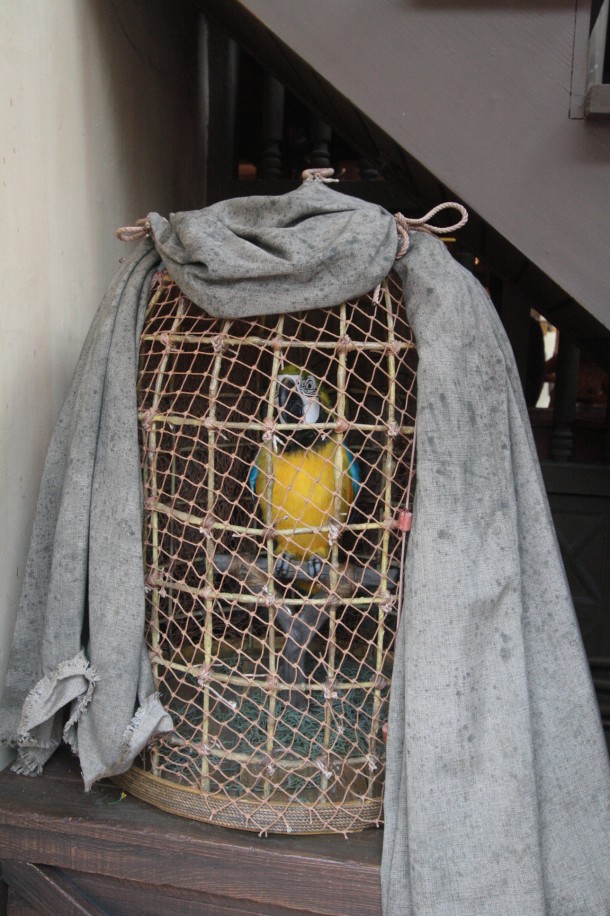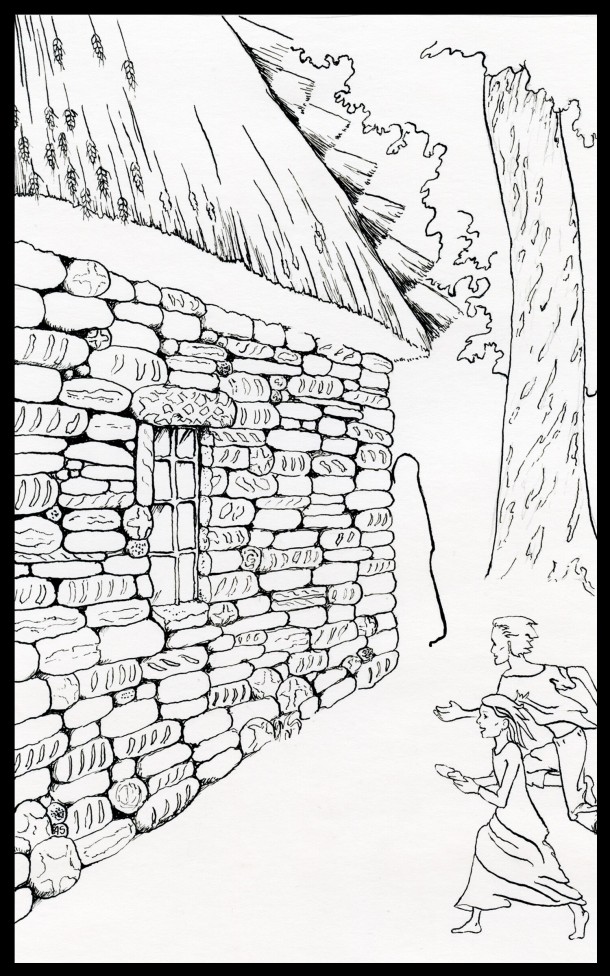The upcoming game, A Pirate’s Adventure: Treasure of the Seven Seas, will soon debut in Adventureland. I will provide several photos here of the game stations now installed in the park, though the game isn’t yet running.
Disney has a long history of these kinds of activities for children. There’s the obvious ancestor in Sorcerers of the Magic Kingdom (another game with physical effects and electronic interaction) as well as the Agent P (former Kim Possible) World Showcase Adventure at Epcot.
But Disney has done special stuff for kids for years. Disney Animal Kingdom (which turned 15 years old yesterday) has its Kids Discovery Club, for example. If we wanted to be cynical, we could say that this was added to DAK because the park didn’t appeal to kids “on its own.” The same could be said about the Epcot game, now that you mention it. Assuming the truth of that for the moment, what does this say about the Magic Kingdom?
The MK has always been known as the park to go to when you have small kids. It has the most rides, and many of the rides are geared to children. So it’s harder to say that kids get bored there. Indeed, Sorcerers of the Magic Kingdom had no lines whatsoever on a recent weekend afternoon when I visited, despite the park having long lines (45 minutes and above for E-ticket rides; 70 minutes for princesses meet and greet). On weekends, people play, but I think that means the interactive games are being played more by LOCALS than by CHILDREN. An interesting development, if true.
Is this a slippery slope? The sort of thing where Disney is now creating experiences meant to appeal to only certain audiences instead of undifferentiated entertainment? That wouldn’t necessarily be a bad thing. It would certainly be a more evolved mode of thinking about the parks. Instead of just creating ONE thing and letting people either like or dislike it, you create variations and flavors of the thing, calibrated for different audiences, and then market it differently based on who you are. This is one of the things the era of Big Data will do increasingly often, and I think we’ll see it accelerate with MyMagic+ and the increased data Disney will get on customer spending habits and ride habits.
The new game looks set to continue in the same vein as older games, with physical effects triggered by (free) cards distributed when you sign up to play.
I will certainly give it a shot when the game is here. But then again, I’m a local!
The Original Grimms
Do you love the Disney movies? Then you’re going to love finding out where those stories came from and how they evolved… and it will surprise you greatly! I’ve got a new book out this month, and it’s something I’ve been working on for ten years. It’s a collection of the Grimms fairy tales, but it’s guaranteed to be like nothing you’ve ever read before. This is the first-ever translation in English of the Grimms fairy tales as they appeared in the Grimms’ working manuscript. These were the stories as told to the Grimms directly; these are the tales, in other words, that truly capture the spirit and intended messages of these peasant stories.
The version of Grimms fairy tales that you’ve read before (if you’ve read them at all) is actually a translation of the seventh edition published by the Grimms. They changed the stories constantly, and it’s a revelation to view them in their original, unexpurged state.
Ever wonder why Cinderella’s prince can’t just recognize his dancing partner by face? You’ll learn the answer by reading the original and comparing it to the final version in Grimms. The Disney movie was not based on Grimms so much as another fairy tale author named Perrault, but our comparison of the Grimms versions reveals the underlying moral message which explains the princes actions in all versions, including the Disney movie.
To give you just a taste of what this book holds, consider the case of Snow White. You may think of this at the moment as a story about true love, probably due to the influence of the Disney movie. The fairy tale in the published Grimms collection is gruesome by comparison, with the evil stepmother punished for her sins with torture and death. But this was not the original Grimms story. My book will let you see the story as it appeared in the manuscript, which is different still. Gone is the stepmother, and gone is the prince as rescuer. Serving those same functions in the original story are the girl’s mother and father. If you consider that for a moment, you’ll recognize that this changes the story dramatically. It’s now a family drama, and the queen is jealous of her own daughter’s beauty. The implication is that she is worried about losing her man to the more beautiful girl. Yes, there’s a minor implication of incest in the original story, made stronger by the fact that the father does rescue the girl at the end and puts his own wife to death. Squeamish about all of these messages, the Grimms hastily replace the mother with a stepmother, and the father with a prince from the outside.
That’s not all. The Grimms kept tinkering with the story. When it was first published in the 1812 edition, the father is absent from the story, and a prince rescues Little Snow White. However, in this early version, the girl is not jolted awake when taken from the dwarfs. Rather, her coffin is carted about the prince’s castle so he can look upon her whenever he wished, and abusive servants, irritated that they had to shoulder her weight constantly, smacked her corpse in anger and accidentally dislodged the magical bit of apple.
Now that you know the true origins of Snow White, won’t it be hard to view the story the same way in the future?
This book will hopefully have an effect on readers just like that for all the stories discussed. It looks at the original and final versions of several popular tales, including Snow White, Cinderella, Sleeping Beauty, Rapunzel, Rumpelstiltskin, Hansel and Gretel, and the Frog King, which was the source material for Disney’s movie the Princess and the Frog.
An essay accompanies each translation to put the different versions into context, provide some cultural analysis, and also compare both text versions to more popular modern retellings, including Disney animated features, if there is one for that tale. We even look at other Disney fairy tale movies, even if they don’t originate from the Grimms. Accordingly, you’ll find a discussion of Little Red Riding Hood, Beauty and the Beast, and the Little Mermaid. The little mermaid interpretation in particular may surprise and even shock readers.
The book is 114 pages long and can be purchased at Amazon.com and several international Amazon websites. It retails for $6.99. You will also find the book available as an e-book for Kindle devices, or the free Kindle-for-PC software. The Kindle version costs $5.99.
More information and updates
Kevin Yee is the author of numerous independent Disney books, including the popular Walt Disney World Earbook series and Walt Disney World Hidden History. Readers are invited to connect with him online and face to face at the following locations:
- UltimateOrlando.com – Kevin’s personal blog for daily WDW updates
- Public Facebook page – or friend his personal Facebook account
- Twitter feed (user UltOrlando)
- Google+ account (user cafeorleans)
- Email at [email protected]
- Weekly Walt Disney World, a Facebook group of regulars who visit Disney World each weekend. Visitors from out of town are encouraged to come and say hello when in Orlando! Join the FB group to learn when/where the next meet is.
- Kevin’s books on Amazon







You must be logged in to post a comment.